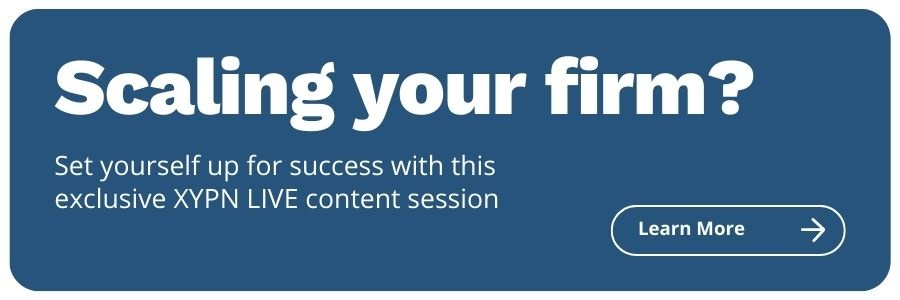Why You Need an Advisory Board for Your Financial Planning Firm: What Would Arlene Say?
Share this
Does your firm have an advisory board?
You’ve probably heard this term before. Many businesses have some form of an advisory board set up to guide their decisions about client communication, growth, service offerings, and more. However, many small business owners—including RIA owners—don’t seem to think that this concept applies to them. They get involved with mastermind groups, find a business coach, or partner up with an accountability buddy—but they’re not getting unbiased advice from COIs or people from their potential client pool.
The truth is that advisory boards come with huge benefits for new business owners in any industry, but especially in the financial planning world. When you’re a new financial planner, you’re offering your services, and selling a relationship based on trust. Who better to bounce questions or ideas off of as you continue to grow than a group of people who falls within your ideal client niche or who work with your ideal clients, too?
This group of people is here to help you grow, offer feedback, and give you their honest advice as you pivot or fine-tune your business. Unfortunately, many of the advisors I talk to don’t really have a clear idea of what an advisory board is, or how to set one up.
What’s an Advisory Board?
I’ve heard “advisory boards” called by a few different names, but the underlying meaning is the same:
An advisory board is a group that’s representative of your ideal clientele, or colleagues and COIs who work with your ideal clientele. You meet with them semi-regularly to ask questions, and receive feedback as your business grows.
Really—it’s as simple as that!
Formatting Your Advisory Board
There are several different ways you can set up your advisory board. First, you need to think about how many people you want to have on your board. Usually, I recommend that you shoot for 10-12 people. These people should either fall within your ideal client niche, or be COIs who work with your ideal client niche. However, if you’re just starting out, having a smaller advisory board may be less overwhelming. Even 1-2 quality advisors can make an incredibly positive impact on the growth and development of your practice.
Next, you need to decide how you want to set up advisory board meetings. Personally, I like one-on-one meetings with each advisory board member. That way you can stagger them over the course of the year, and get different questions answered each quarter.
One-on-one relationships also build a fantastic foundation of trust between you and your board member. There’s less pressure than meeting in a group because you’re just taking them out to a fun lunch or coffee to ask for feedback, rather than rounding up a large group of people who will all have to publicly give you their opinion.
I also prefer in-person meetings for an advisory board if it’s possible. This gives your meeting time a little bit more of a personal touch, and you may be able to develop a deeper relationship with your board members if you share a location, and have common interests in your community. However, if one on one meetings, or in-person meetings, aren’t practical for your board members (or you!), that’s okay, too!
You can always host fun virtual happy hours, or have more serious meetings with your advisory board members leveraging Zoom or Google Hangouts. Whatever you decide, make sure you’re thinking about what will be most comfortable for them.
You can also have group meetings with your advisory board. If you choose to go this route, having an advisory board that’s local probably makes the most sense. You also won’t want to meet with the full group too often, or you run the risk of burning out your board members!
Finally, you can set up a combination of one-on-one and group meetings. This might be helpful if you have advisory board members who are willing to participate in an annual group meeting, but still have a few one-off meetings with you throughout the year as questions come up.
Keep in mind that if you’re trending toward having larger group meetings for your advisory board, you need to plan ahead! Your board members have dedicated their time to meet with you and help you grow, so having a clear-cut agenda for your in-person group meeting is a must. It can also be helpful to hire a facilitator to gather the information from your meeting and drive the conversation. You can act as the facilitator yourself, as well, but having an impartial third party can often make a big difference!
Frequency of Meetings
I usually recommend that people meet with the members of their annual advisory board annually, or a few times a year. Try to focus your meetings around big projects that you’ll be working on, or during seasons of business development (read: don’t meet with your advisory board during tax season prep!). Your goal with these meetings is to get the input of your advisory board members, so make it count!
This may sound obvious, but don’t schedule meetings if you’re drowning in client work and aren’t working on growth goals or new projects right now. It’s okay to space out meetings and only touch base with your advisors when needed. In fact, they’ll may prefer your meeting schedule to go this way!
Incentive
You might be wondering how to convince people to join your advisory board. This can feel like an awkward conversation, especially if you’re a new firm. After all, these people are likely in your ideal client niche. How do you solicit their feedback without sounding sales-y?
In my mind, you can do two things:
- Incentivize the advisory board participation with swag, fun events, and food. Seriously, buying someone a cup of coffee, or taking them to a local brewery to pick their brain can go a long way.
- Remember: you’re not selling them. So make that clear! When you reach out to someone, explain that this is a no-obligation agreement. They can end the relationship at any time, and you aren’t here to sell them on your services—you just value their feedback and opinion.
There’s also value for your advisory board members because they get to be involved in your business in a deeper, more meaningful way. I find that this is often incentive enough, especially for board members who are already existing clients, or who are COIs who work with your same client base. They want to see you succeed, and they know improved services on your end will only benefit them in the future.
It’s also important to keep in mind that, although your goal isn’t to sell your advisory board on your services, this will sometimes happen. You might be pitching a new service idea to get feedback, and your ideal client/advisory board member might be jumping out of their seat to sign you up as their financial planner. That’s okay, too! Just remember that selling them isn’t the ultimate goal. If it happens, let it happen organically.
Finally, remember to check in with your advisory board members periodically. Asking whether they want to opt-out annually is a good idea. It keeps the relationship pressure-free, and helps to keep building trust between you and your board members.
Inviting Advisory Board Members
While I don’t think there’s a reason to make a big deal out of inviting people to be an advisory board member (don’t engrave anything or send them some big care package!), I do think it’s important to honor your future board members in a way that will be meaningful to them. Try to judge the people you’re contacting so that you can reach them in a way that will make them feel special. Send them a personal email, or pick up the phone to give them a quick call.
Advisory Boards When You’re a New Firm
Many new advisors I speak with aren’t sure whether there’s value in an advisory board for them, because their practice is still finding its footing. Let me erase any preconceived notions you might have: there is absolutely value in an advisory board, especially if your RIA is new!
In fact, because you’re the new person on the block, you have a bit of an advantage. You can reach out to 6-12 people, invite them to one-on-one meetings (like a cup of coffee, or a meal), and explain your situation. Let them know you’re starting a new practice, and that you’d like to ask them about what you’ll be doing, and get their advice.
This same concept applies to reaching out to COIs who work with your target clientele. They’ll be eager to give you the scoop on your shared market, and it’s good for them to know there’s a new firm that they can refer their own clients to over time.
When you’re a new firm owner, you’ll want to generally have one-on-one calls. After a few years, you may be able to have larger group advisory board meetings with your clients. However, for now, the more personal you can make these meetings, the better! You’re going to be really digging into what these individuals want from a financial advisor, and what their hopes are (or fears are) for their relationship with their advisor, which can be uncomfortable to review in a group. Reviewing with them regularly that you’re not here to sell them, just to get their feedback, can also help to build trust out in those often emotional conversations.
Wondering what you’ll cover with your advisory board members as a new advisor? There are so many different things you could request their feedback on, including:
- Your website (or website demo)
- The collateral you plan to distribute to clients and prospects
- How well you explain things, including the value you bring to the table as an advisor
- The quality of your marketing materials
- Your logo (does it communicate what you want it to?)
As a new financial planner, you basically want to go through your pitch with your advisory board members. Explain what you’re going to be doing, how you plan to work through your planning process and ask if the service sounds enticing - or if your board members have any feedback.
I did this myself when I launched my own coaching firm. I spoke with folks I wanted to have as clients, but I knew were being coached by other people that I respected. I spoke with people I had coached in the past, and felt really good about the work we’d done together. Additionally, I reached out to a few people who I had coached, but I felt I hadn’t done my best work for them. . That way, I ensured that I got comprehensive feedback from people who loved my services - and people who maybe saw some room for improvement in my services. Don’t be afraid of feedback, even if it’s people telling you where you can improve! This input is very valuable, especially as you’re kicking off.
When You’re an Existing Firm
If you’ve been in business for a few years, you’ll follow the same basic pattern to create an advisory board that you would if you’re a new advisor. However, you start by tapping some of your current clients—the ones you wish you could copy and work with all the time! That way, you’re getting feedback from the people you want to work, and are dedicating yourself to building a business that serves them.
You might also consider tapping a few COIs or colleagues to be part of your advisory board. Receiving feedback from these individuals can help you get a fresh perspective on your business, and grow in new ways you may not have thought of yet.
How you choose to build your advisory firm as an existing RIA largely depends on how you want to grow your firm (and how you’ve built it in the past). You may want to only have ongoing clients on your advisory board, or you may want to have a few project-style clients who can give you unique insights if you’re trying to grow the hourly or project planning side of your business. It all depends on what you’re offering, where you see there’s room for growth, and where you feel like you need the most feedback on.
Questions to Ask
If you’re a new advisor, the questions you ask your advisory board are going to be much broader than if you’re an existing RIA owner trying to fine-tune your services. Here are a few options to get you started:
- What is your first impression of these marketing materials?
- What is your reaction to this package of services?
- Is there anything I could explain that I have forgotten to mention?
- Do the fees make sense?
- What financial concerns do you have right now?
- What event would push you to speak with a planner? (buying a home, having a kid)
- Does this service model feel valuable to you? Can you see the value you’d get out of working with our team?
- What concerns do you have about working with an advisor? Are there any?
- How do you want to feel/what marks “success” when working with an advisor for you?
As an existing advisor with a well-established RIA, you might be facing some different kinds of growing pains that you want to ask your advisory board about. A few questions you might consider asking are:
- What do you feel you could or should get from your planner?
- Is there any particular service offering, or touch point, that you wish we incorporated into our client relationships? (for existing clients)
- Tell me a little about what makes you refer us. We love it, but we want it to be easy and we sure don’t want to mess up anything we are doing well. (for clients who may be big referrers)
- What is your feedback on this new staffing decision?
- How do you feel about this new strategy/service model/process?
- Does this new technology update make sense? (Make sure to ask this before you invest! You’ll be surprised what they don’t care about!)
- What are your communication preferences?
- How do you feel about our meeting frequency?
- How would you describe your client experience?
- Does our planning process make sense to you?
- Was onboarding easy and seamless?
- Is there anything we do that you don’t see value in?
- Do you like X type of communication? (Market updates, monthly newsletters—whatever you’re currently doing)
Do Your Research
An advisory board can have a positive impact on your practice - but only if you plan ahead, and set it up correctly to maximize results. Figuring out how you want your advisory board to benefit your practice is a great place to start. From there, I recommend checking out Stephen Wershing, CFP®, founder of The Client Driven Practice. Stephen is really the go-to guy when it comes to advisory boards for financial planners.
He focuses on helping advisors create advisory boards that are uniquely tailored to benefit their practice in a way that actually helps them grow rather than just getting feedback for the sake of feedback. He also has a great white paper on client advisory boards that covers how you can leverage your advisory board to grow your business and get referrals.
Have more questions? Reach out to me! I’m a big believer in advisory boards and have helped many clients over the years set up a board for their firm. I’d love to help in any way I can, or point you in the right direction!
 About Arlene Moss, Executive Coach
About Arlene Moss, Executive Coach
Arlene gets a kick out of helping financial advisors get over being overwhelmed and take on their frustrations so their businesses soar. Arlene works to ensure XYPN members are able to help their clients prosper while creating a sustainable business model. Through XYPN Academy and one-on-one coaching, members get the support they need to grow their businesses and overcome the challenges that come their way.
Share this
- Advisor Blog (722)
- Financial Advisors (245)
- Growing an RIA (128)
- Business Development (96)
- Digital Marketing (96)
- Marketing (93)
- Community (82)
- Start an RIA (76)
- Coaching (75)
- Running an RIA (72)
- Compliance (70)
- Client Acquisition (68)
- Technology (67)
- Entrepreneurship (64)
- XYPN LIVE (64)
- Fee-only advisor (49)
- Sales (49)
- Bookkeeping (46)
- Client Engagement (45)
- Practice Management (44)
- XYPN Books (43)
- Scaling an RIA (42)
- Investment Management (41)
- Financial Education & Resources (32)
- Client Services (31)
- Employee Engagement (31)
- Lifestyle, Family, & Personal Finance (31)
- Market Trends (27)
- Journey Makers (25)
- Process (18)
- Niche (13)
- SEO (9)
- Career Change (8)
- Partnership (8)
- Transitioning Your Business (7)
- Sapphire (6)
- Persona (4)
- Transitioning To Fee-Only (4)
- Emerald (3)
- Social Media (3)
- Transitioning Clients (3)
- RIA (2)
- Onboarding (1)
Subscribe by email
You May Also Like
These Related Stories

Reducing the Lifestyle Practice Stigma: What Would Arlene Say?
May 17, 2018
12 min read

What Challenges Do Firm Owners Face in Years 3-7? What Would Arlene Say?
Aug 8, 2019
13 min read




.png?width=600&height=400&name=PW%20%20Insider%20Insights%20YT%20Thumbnail%20Image%201920%20%C3%97%201080%20px%20(1).png)

